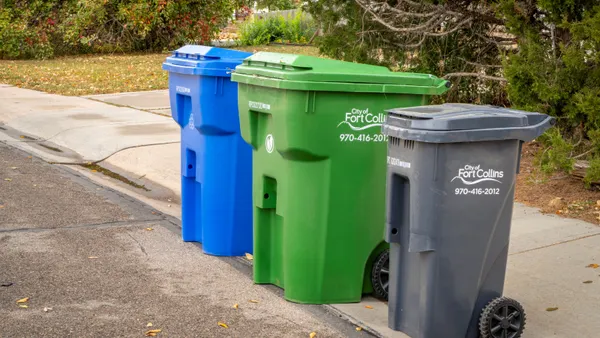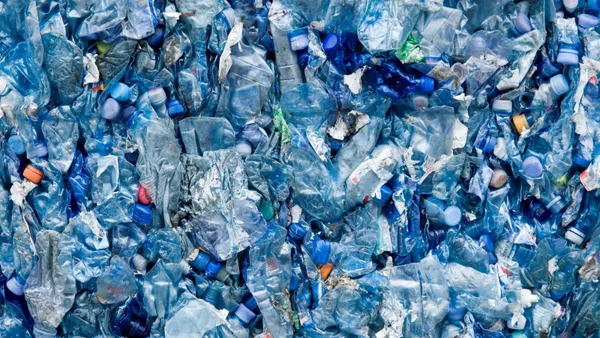Dive Brief:
- Demand for used textiles from the UK began to dissipate in 2014 and has dropped substantially since then, marking a turning point from a few years prior when both exports and prices were high, coupled with a rise in new entrants into the textiles market, according to a new report from the Waste & Resources Action Programme (WRAP).
- The report suggests that the amount of textiles collected for reuse and recycling peaked at around 650,000 metric tons in 2015, though preliminary data points to a 4% decline in 2015.
- Some of the authors' suggestions were to consider the need for varied and sustainable end-markets such as re-use markets, as well as to develop recycling grade markets for textiles that aren’t of a quality for re-use as clothing, including fiber-to-fiber uses.
Dive Insight:
The textiles and clothing industry is the 5th largest contributor to the UK’s carbon footprint according to WRAP. In that volume, simply expanding its use for nine more months would cut carbon, water use, and waste by about 20%-30%. Donating or selling one ton of used textiles would reduce CO2 by 11 tons.
But the UK is having a hard time reducing its fast mounting textile waste.
Alan Wheeler, director at the Textile Recyclers Association added: "The used clothing industry is going through an extremely difficult period both here in the UK and globally. Political and economic pressures are being put on existing markets and this report shows that resultant UK collections actually decreased slightly in 2015," as reported in Waste Management World.
He projected that with new clothes sales flourishing, the trend will continue for some time. His advice in the interim is for the UK "to take a longer more strategic view on how to develop new markets which need to be less reliant on used clothing exports and consideration of how to finance these developments needs to be given a high priority."
Meanwhile, this is an issue gaining attention in the U.S. too; Americans generate 25 billion pounds of textile waste annually — only 15% of which is donated or recycled. Though a handful of stakeholders, including clothes manufacturers like Levi’s, H&M, Puma, The North Face, American Eagle Outfitters, and others are finding innovative ways to see that tons of these materials carry on their life rather than end up on landfills.








